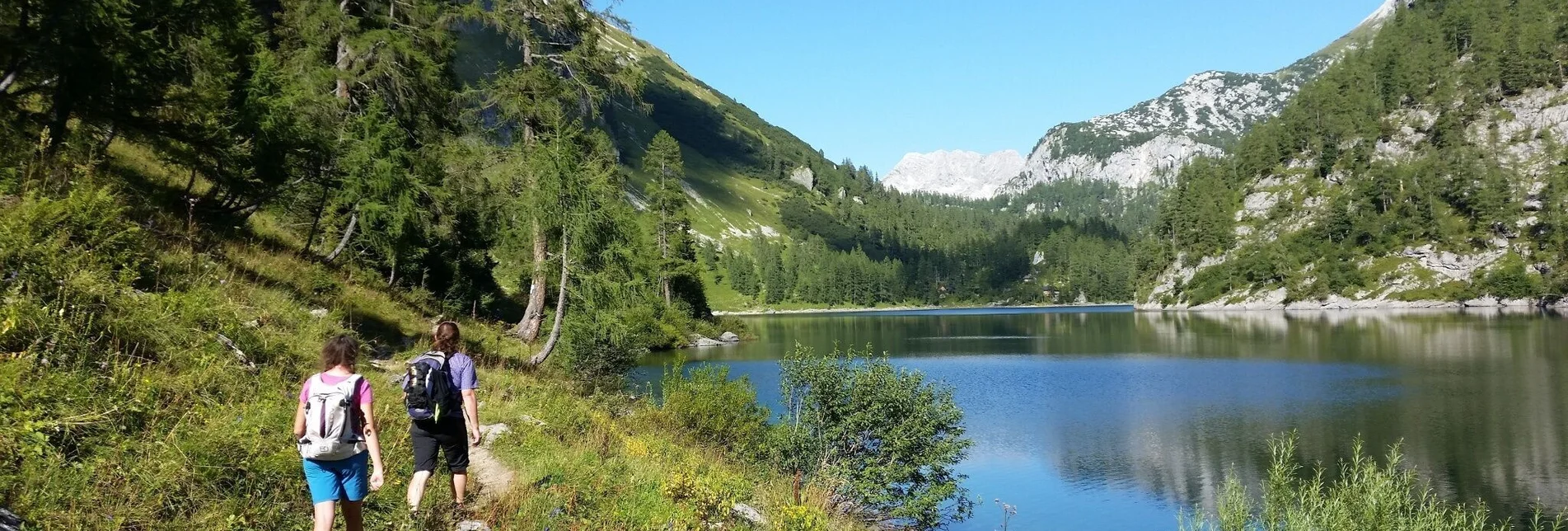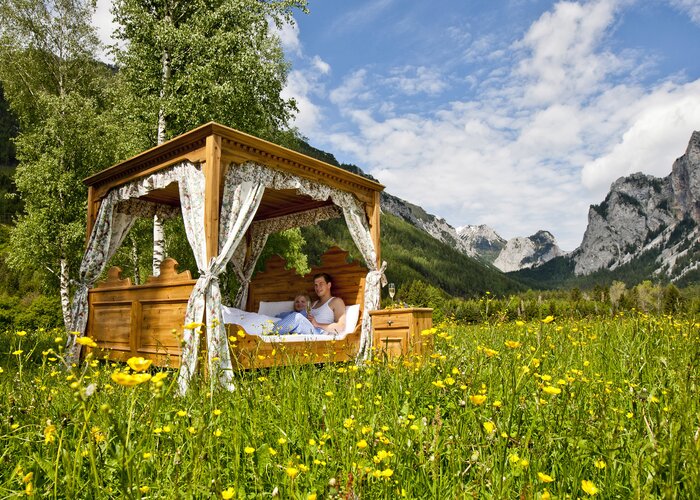

BergeSeen Trail 20: Gößl - Appelhaus
Stage 20 of the Salzkammergut BergeSeen Trail leads into the high mountains. After a rather steep forest ascent, you reach one of the most beautiful mountain lakes in the region – and the high plateau of the Totes Gebirge Mountains. Its eastern area lies between 1600 and 2000 metres and is strongly characterised by “green karst”: between craggy peaks, monotonous hollows and wild, rugged karst formations, larch groves, fields of mountain pines and rare alpine plants provide a green flair. However, don’t be fooled: away from the marked trail, the terrain is impassable and harbours serious dangers.
Characteristics
Best season
The tour in numbers
Map & downloads
More information
The ”Ausseerweg” leads to the left around the lake and continues to the small Lahngangalm Meadow on the northern shore. This was a so-called bridle path which was built in the 19th century for blue-blooded hunters. Some of the passages of piled up stones lead through the impassable terrain like levees. To the right is the Hintere Lahngangsee Lake in a 100-metre-deep forest and mountain pine basin. After a rain, you can even hear the roar of a waterfall. Between the Salzofen Mountain and pyramid-shaped Elm (2128 m) rising to the east, you reach the wooden huts in the Elmgrube (1622 m). 30 min
There you leave the trail to the Pühringer Hut to the left (sign “Am Abblaser – Albert Appel-Haus”). Now you hike along path no. 201, a section of the Northern Alpine Long-Distance Trail 01, up through mountain pine passages to the Abblasbühel (1869 m). In this saddle below the bare rock of the Hochkogel (2091 m), there is normally a bubbling spring. After a (often dried-up) pool, a trail to the 2062-metre Wildgößl turns off to the left. Its crossing is quite rewarding but requires at least an additional hour of hiking. The shorter route is path no. 201 to the right, which leads through the hollow “In den Wiesen” to the turnoff of the Grieskarsteig path in the direction of Lake Almsee. From there, you continue left and around the Wildgößl to the Wiesenlacke pool, which often lies empty of water between grass and rock (the Wildgößlweg joins there). The trail now heads another 4 kilometres west, always gently ascending and descending through sometimes rocky, sometimes grassy terrain, which is overshadowed on the left by the Hinterer Bruderkogel (2031 m) and the Wildkarkogel (1950 m). To the right, the pine green Großer Woising (2064 m) can be seen. Finally, the exactly 1900-metre-high Redender Stein, an “echo rock”, with its large summit cross appears in the distance. Hidden below is the Albert-Appel-Haus (1660 m) in the Henarwald, an expansive and quite untouched larch grove. Opened in 1928, the shelter hut belongs to the Austrian Tourism Association and was named in memory of its founder and first chairman. This very hospitable alpine hut is served by a 6-kilometre-long material cable lift. 3:15 h









